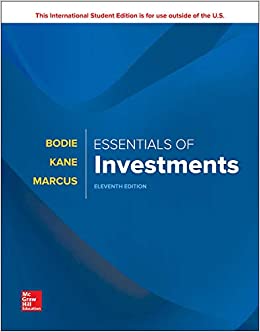Answered step by step
Verified Expert Solution
Question
1 Approved Answer
Let's consider an investor who wants to invest $100 worth in a CPPI product which consists of risky assets of value E and safe (riskless)
Let's consider an investor who wants to invest $100 worth in a CPPI product which consists of risky assets of value E and safe (riskless) assets of value B. The investor also decides to set the risky assets multiplier m=3 based on his analysis and he doesn't want to lose more than 80% of his initial investment i.e. go below 80%.
- How much is invested in the risky versus safe asset at the initial date t=0?
- Let us further assume that the risky asset value increases by 1/6=16.6666...% between t=0 and t=1 while the safe asset does not change in value. What is the CPPI allocation to risky and safe assets at date t=1?
- Is the CPPI strategy pro-cyclical (recommends to buy the risky asset after an up move) or anti-cyclical (requires to sell the risky asset after an up-move)? Can you see any potential problem if a mast majority of investors start following a CPPI-type strategy? Illustrate your answer by a short analysis of the Monday, October 19th, 1987 US stock market crash as a lesson from history on portfolio insurance and the risks of feedback loops.
Step by Step Solution
There are 3 Steps involved in it
Step: 1

Get Instant Access to Expert-Tailored Solutions
See step-by-step solutions with expert insights and AI powered tools for academic success
Step: 2

Step: 3

Ace Your Homework with AI
Get the answers you need in no time with our AI-driven, step-by-step assistance
Get Started


